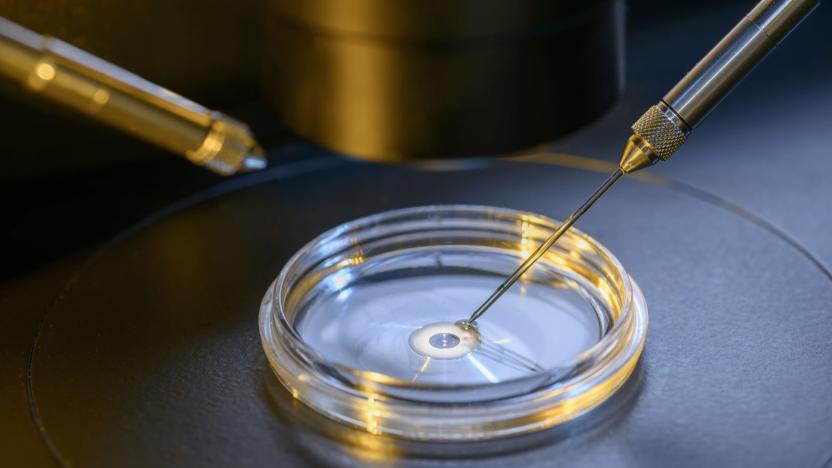mitochondria
Latest

Scientists might know why astronauts develop health problems in space
Researchers have found that a key component of cells likely explains why astronauts develop health problems in space.

UK doctors plan country's first three-person fertilization procedure
UK officials have approved two women for mitochondrial replacement therapy, the fertilization procedure that results in a baby technically parented by three people, the Guardian reports. The procedure, which still isn't approved in the US, was legalized in the UK in 2015 and the Newcastle Fertility Centre, where the two women will be treated, was granted a license to perform the procedure last March. While it's not the first time a procedure like this has been done, it is the first time it will happen in the UK.

ICYMI: Better walking bot and an anti-aging breakthrough
try{document.getElementById("aol-cms-player-1").style.display="none";}catch(e){}Today on In Case You Missed It: Georgia Tech overhauled its DURUS robot to walk with a human-like gait that makes it the most efficient bipedal robot. Scientists at the EPFL did some solid research into the pomegranate fruit that shows it can counteract disease and extend the life of worms by 50 percent and endurance in rodents by 40 percent. Human trials are happening now. You can see the latest 3D bone printer here and what the FBI has been doing with iris scans, here. As always, please share any interesting tech or science videos you find by using the #ICYMI hashtag on Twitter for @mskerryd.

'Three-parent baby' test success could mean human trials in two years
The theoretical and controversial method to make a baby from three parents, using in-vitro fertilization (IVF) to insert certain genes from a third person into a growing embryo, has been a long time coming. But after years of restricted research and testing on donor eggs, scientists at Newcastle University have successfully tested their mitochondrial replacement therapy (MRT) method in healthy human embryos for the first time. Should it be deemed safe enough, human trials could start in one or two years.

US medical panel recommends 3-person embyronic testing
The US National Academy of Medicine recommended Wednesday that the Federal Drug Administration should approve clinical trials for so-called "3-parent embryos." It's a controversial procedure that would transfer mitochondria from a healthy, secondary human egg donor into a fertilized diseased embryo.

The UK inches closer toward making babies from three people's DNA
The UK's House of Commons overwhelmingly voted in favor of a law that would allow scientists to genetically engineer babies from the DNA of three people. Before your mind wanders to some of the more... salacious possibilities, the technique -- a spin on traditional in vitro fertilization -- is meant to help women with mitochondrial disease have families without fear of passing the illness down.

Hyperspace Beacon: We hope this never makes it into SWTOR, but knowing our luck, it probably will, again
Tweet var digg_url = 'http://digg.com/pc_games/Hyperspace_Beacon_We_hope_this_never_makes_it_into_SWTOR'; Like a kowakian monkey-lizard in heat, Larry Everett is back again with another edition of your guide to EA-BioWare's yet-to-be-released game Star Wars: The Old Republic. Welcome to the Hyperspace Beacon. Every once in awhile, the Star Wars universe produces the strangest plot devices or game items. Some of these concoctions should never see the light of day, but unfortunately, they do. I like to highlight these malformed ideas in a segment of the Hyperspace Beacon called "We hope this never makes it into SWTOR, but, knowing our luck, it probably will" or WHTNMIISWTORBKOLIPW, for short. This week's column revolves around the prequels. Although there are many, many, many things wrong with the prequels, I would like to take a look at some of the highlights. To help those who may not know what is being discussed, I will give you a brief explanation of what each item is, then explain what is wrong with it, and follow that with a humorous explanation of how BioWare will ruin SWTOR by implementing it in our beloved game. Let's see what creative blunders we have in store this week.






